In the pursuit of more lift and with even less wind, Starboard has introduced 2 new fuselages. The 95 cm plus and 115 cm plus fuselages. What’s different? In addition to the back wing being trimable in both fuselages, the fuselage is positioned further forward, so that the wings compared to the regular 95 cm and 115 cm fuselage are a lot further forward. We tested them. Read below our findings on the Starboard 115 cm plus and 95 cm plus fuselages.
The differences of the plus fuselages in a row
For both the 95cm and 115 cm fuselage, the attachment of the mast is placed backwards, so that the front wing is 5.5 cm more forward at the 95 cm and at the 115 cm this is even 7 cm. Because the front wing is positioned further forward, the foil generates much earlier (and more) lift to go up.
In addition, in both fuselages, the angle of the back wing can be adjusted between + 2 degrees and – 2 degrees. This can be done by included set to spacers (6 pieces). By changing the angle of the back wing you can influence the degree of lift. The smaller the number the less the lift generates the back wing.
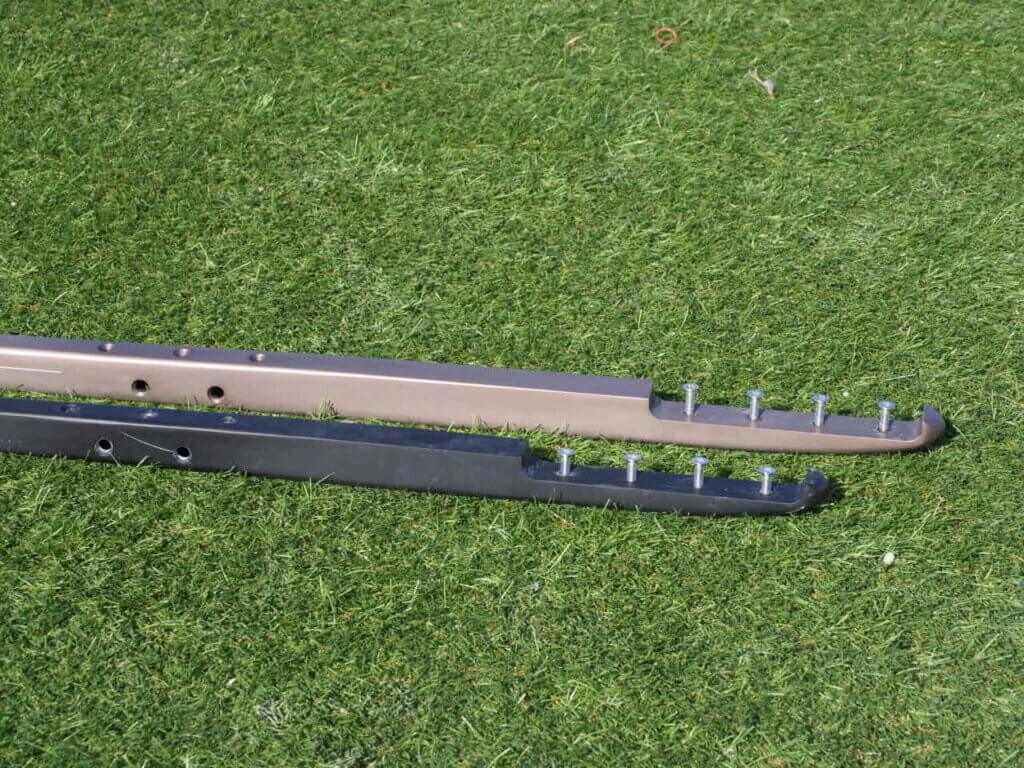
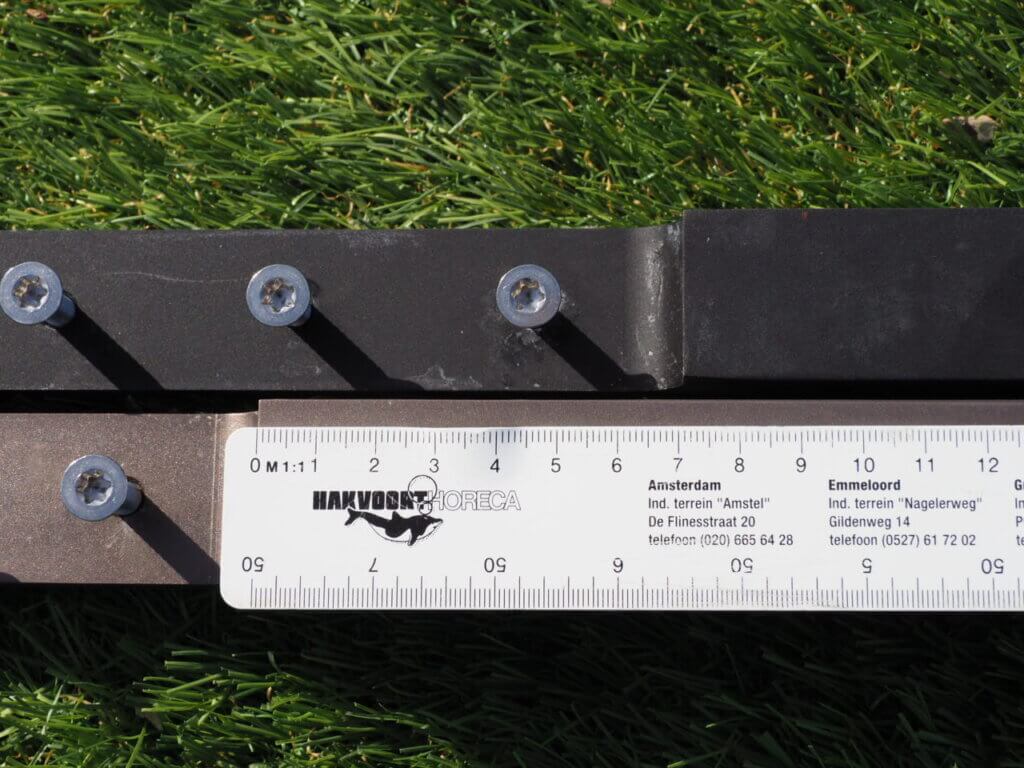
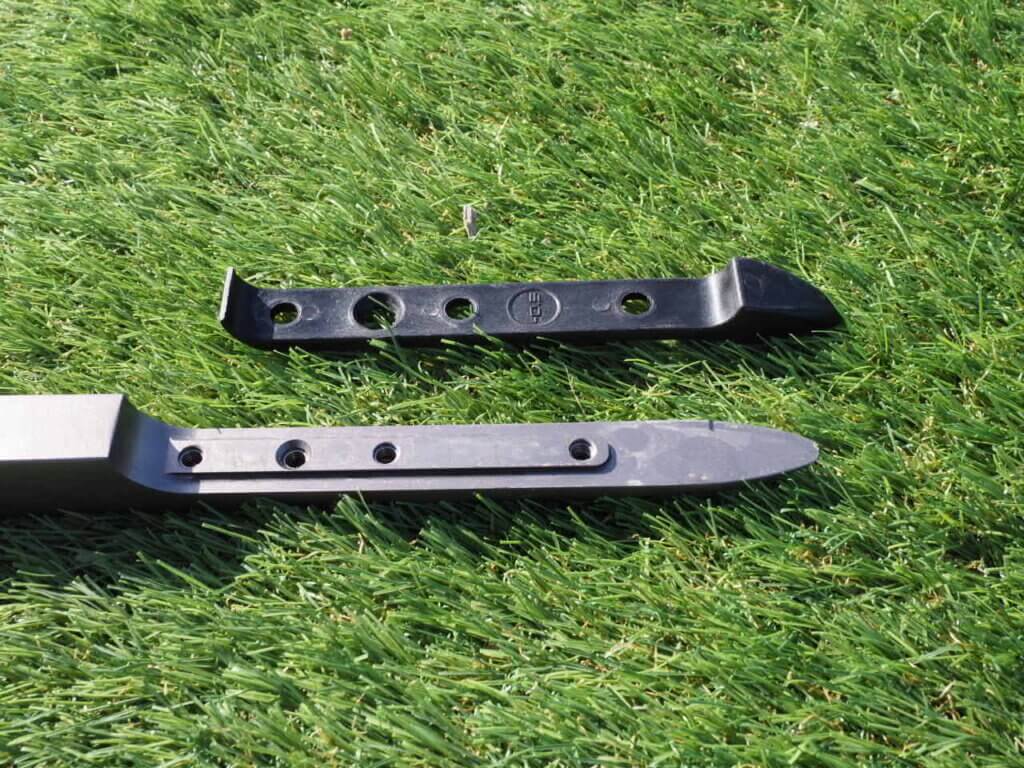
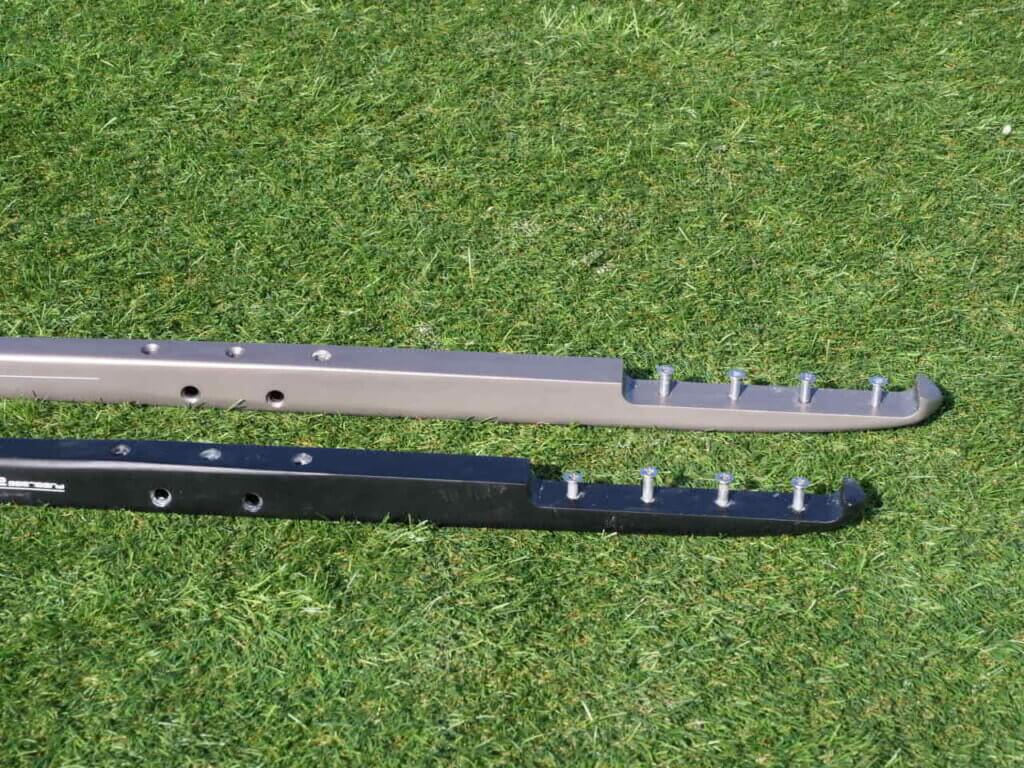
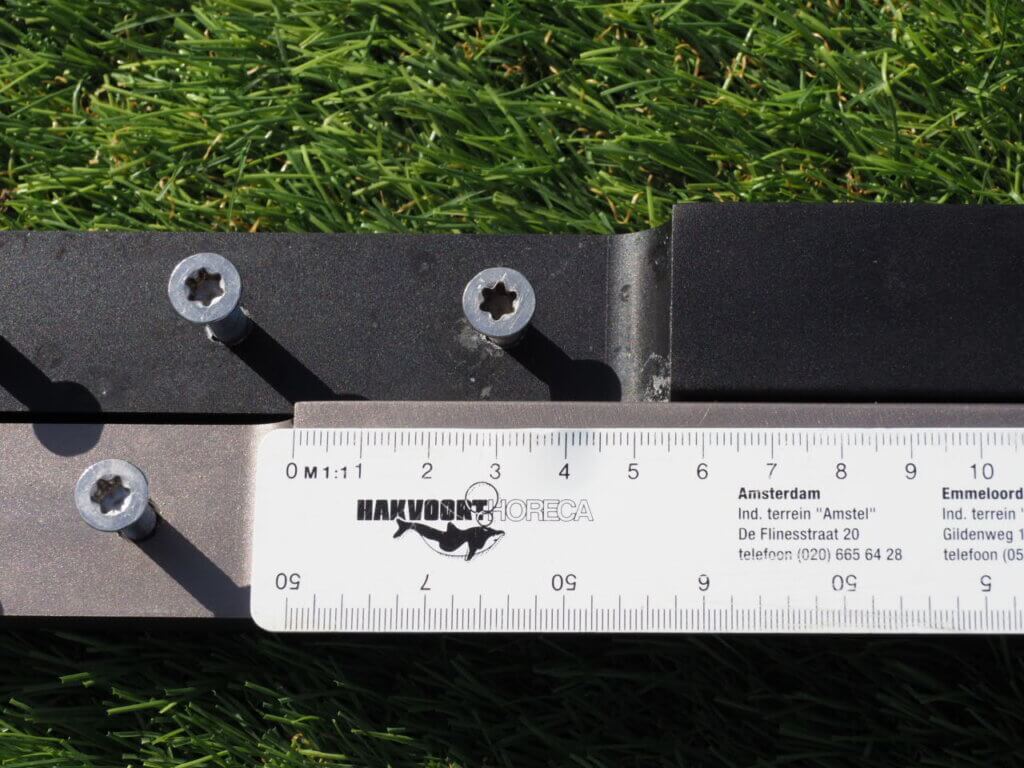
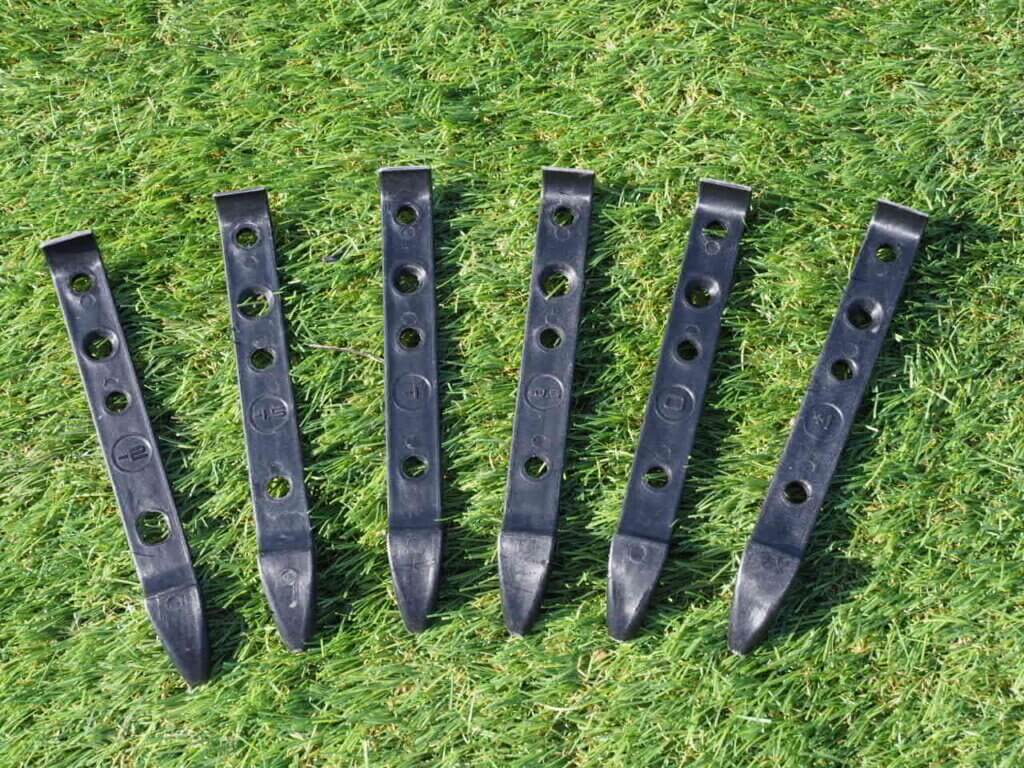
The Starboard fuselage 95 cm plus
We swap the regular fuselage 95 cm of the Starboard GT-R windfoil (800 cm2 front wing and 330 cm2 back wing) with the plus variant. We go on the water with the Severne Foil Glide 7.0 m2 on the Starboard Foil 150. There is about 12 knots of wind with a lot of dips. We start with the -1 degree spacer. What is immediately striking is that with the least speed the board is already coming up. He keeps giving a lot of lift, a little too much (with this wind) to sail back and forth. Upwind and downwind are fine. Then you can clearly feel the extra power that fuselage gives to the set.
Back to the beach and replace the spacer with the -2 degree variant. A very clear difference. We now have to make more effort to get up and we also need to hang back more to stay up. But it’s fine. There remains enough lift to stay in the air even with a wind dip. Gives a little more the slalom feeling. Now half wind foiling is fine to do.
In the end, for the wind conditions between 10 and 14 knots, the -1.5° variant turned out to be the best i.c.m. the board and the sail. And easy to cruise back and forth and also fine for half-wind. We have not yet been able to test this fuselage in the lower wind range, but we expect that in practice the 0° and 1° variant will only be used with very little wind.
Fewer freeride properties
Because this fuselage gives on average much more lift than the regular fuselage 95cm it is also more difficult to just foil half wind back and forth. If you want this, you will soon start using the spacers with the biggest negative angle. If you want to have more challenge and go up and down wind with more power, then this fuselage is also a really good upgrade. Through this fuselage, the foil feels more like the Starboard Racefoil in terms of properties.
Because the front wing is further forward, jibes also become easier. Although it was looking for a new balance. We had to keep the pressure forward longer to prevent us from getting too far up.
The recommended trim according to Starboard
-2° for a >25 knots
-1.5° for high winds 15-25 knots
-1° for wind speed of 12-14 knots (recommended default mode)
-0.5° for wind speeds between 10-12 knots
-0° for wind speeds around 8-9 knots
+1° for wind speeds around 7 knots
We would like to add to these advice from Starboard that if you are light and/or just want to foil half wind, you can use a spacer of at least a 1/2 degree less.
The Starboard fuselage 95cm plus comes:
Suitable for
We think this fuselage 95 cm plus is best suited for:
- Suitable for the heavier wind foil (freeride) > 90 kg)
- Suitable for the lighter wind foil (race) < 70 kg)
- Suitable to upgrade the GT-R in low winds (up to about 12 knots)
Conclusion Starboard Fuselage 95 cm plus
Starboard’s design does not miss its purpose. This fuselage gives you a lot more lift and you get up faster. So with little wind, this is a big win. If you also want to wind with more wind (>14 knots), the regular fuselage 95cm is probably a better option. Our advice is to keep your old fuselage with you.
The Starboard fuselage 115 cm plus
This fuselage is really intended for the wind foilers who want to foil races with super little wind and big racefoil, with a strong focus on up- and downwind and foiling races. So from that perspective, we’re testing this fuselage.
We start the test with the 800 cm2 front wing and the regular 255 back wing (more on that later). We’re going to water the Hyper Glide 8.0m2 and the IQfoil 91. We start with the spacer of -1.5°. There’s still between 12 and 14 knots of wind. As with the 95cm plus fuselage, it immediately stands out how fast the board comes up and how much lift the foil gives. By comparison, this is much more than the standard Starboard racefoil with the 1,000cm2 front wing.
With this wind we found it too much. Back to the side and the -2° spacer on it. That was better, but still a lot of lift. Upwind is very pleasant. We also sailed higher up wind than with the regular 115 cm fuselage. Downwind we had more power, but we also felt a lot of lift (too much). This made us less fast, simply because we had to discharge and stand too far forward.
We also sailed this fuselage with the 9.0m2 at 8 to 10 knots with the -2° spacer (still with the 800 cm2 front wing). That was a good combination. The lift at that time was similar to the 1,000 cm2 front wing. We didn’t feel the need to try another spacer.
We tested this fuselage with minimal wind conditions and also with minimal wind (6 to 8 knots) the foil with the spacer of 0 degrees gave a lot of lift. Every harder flurry we got we were basically equal to too much lift. And with over 10 knots we actually needed even more negative angles for the back wing!
Back wing 255 cm2 -2° needed!
At the same time as the introduction of the fuselage 115cm plus, Starboard also introduces the back wing 255cm2 -2 degrees. This back wing has exactly the same profile as the well-known 255cm2 back wing, but is at a slightly different angle, yes -2 degrees!! So if you use the-2° spacer i.c.w. the new back wing 255 cm2 -2° the angle is -4°.
With the back wing 255-2, the set feels much more balanced. If you want to relax foil, in conditions up to about 14 knots -0.5 or -1 is a great choice. With less wind you can quickly get the 0 degrees and with less than 9 knots the +1 is fine. If you want to focus on up and downwind, you almost always sail a spacer larger (with a higher number).
Note these are general settings. We have noticed that this also depends on the type of board and the sail you use!
The recommended trim according to Starboard
-2° for >>10 knots (recommended default mode)
-1.5° for high winds 8 to 9 knots
-1° for wind speed around 7 knots
-0.5° for wind speeds around 7 knots
-0° for wind speeds around 6 knots
+1° for wind speeds around 5 knots
O.b.v. our experiences, the recommended trim of Starboard is based on the back wing 255 cm2 -2°. Keep this in mind. The Starboard back wing 255cm2 -2 is for sale as a loose item.
The Starboard fuselage 115cm plus comes:
- As a loosely available accessory
- The Starboard Carbon Race plus (here’s the back wing 255 cm2 on it)
- The Starboard IQfoil carbon and Starboard IQfoil aluminium (here the back wing is 255 cm2 -2° on)
Conclusion Starboard Fuselage 115 cm plus
For the race windfoiler, this fuselage is a must and a big upgrade. Only buy also the special back wing to actually get the most out of this fuselage. This fuselage also makes wind foiling more extreme, so that the fuselage is not suitable for:
- Lighter competition wind foils (< 70 kg)
- Recreational wind foilers
- If you just want to wind half wind
Don’t you want to wind foil races? Then the regular fuselage 115cm or the 95cm plus fuselage is a much better alternative.


